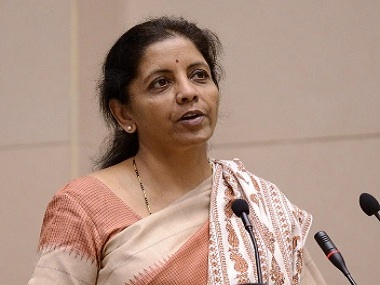Finance Minister Nirmala Sitharaman’s first Union Budget is set to be presented in Parliament in the backdrop of an unpleasant phase in the economy. The unemployment rate is at a 45-year high, economic growth is slowing, banks’ non-performing assets (NPAs) are near Rs 10 lakh crore and there is a demand slowdown to deal with. In that sense, Sitharaman has a tougher task in hand than her predecessor Arun Jaitley. At this stage, there are certain issues that seldom find space in the discussions but very critical for the economy. Three such subjects are: 1) Convincing measures on bringing transparency in political funding, 2) Addressing long-ignored land, labour reforms and 3) Privatisation of the public sector banks (PSBs) and other public sector undertakings (PSUs). Of course, these are politically sensitive subjects and won’t be welcomed wholeheartedly. But, Sitharaman can’t ignore these when discussing the economy. Electoral funding Electoral bonds were introduced with the goal of bringing in greater transparency to political funding. Under this scheme, donors could walk into a designated bank and buy electoral bonds of a certain value, then deposit into the account of his/her preferred political party. No questions are asked. The electoral bonds, thus, proved to be even more non-transparent an instrument than straight cash donations which were even partly (high-value donations) disclosed to the Election Commission. [caption id=“attachment_5039341” align=“alignleft” width=“380”] File image of Finance Minister Nirmala Sitharaman. AFP[/caption] According to an RTI (Right to Information) reply, 99 percent of donations received by the political parties between March 2018 and 24 January 2019, were in the form of electoral bonds in the denominations ranging from Rs 10 lakh to Rs 1 crore. Guess who was buying these bonds? Not surprisingly, the ruling Bharatiya Janata Party (BJP) received 95 percent of the funds through electoral bonds (around Rs 210 crore). The Election Commission woke up to the problem a tad late. Opaqueness in political funding contributes to a significant chunk of corruption involving the corporate-political nexus. Electoral bonds clearly failed to bring in transparency in the whole affair. No one knows who purchases these bonds and where the money goes. Only the designated bank and the government would know the origin and trail of political funding. This is contrary to the original promise of the Narendra Modi government of bringing in real transparency in political funding. The Budget should spell out ways to achieve real transparency in electoral funding. Land/labour reforms A major reason why Make in India failed to pick up in the desired manner is the fact that companies still find it difficult to acquire land and labour in India. Land acquisition continues to be a lengthy process and governed by the Land Acquisition Act of 2013. As IIFL chairman Nirmal Jain is quoted in this story, a real estate
regulatory authority (RERA) style implementation is needed for land acquisition policies. “Since land is a state subject, the Central government can provide a model law for land acquisition and then work with state governments to implement these changes—similar to RERA implementation,” Jain says. Similarly, the labour reforms are key too. As JP Morgan said in a recent note, the effective cost of labour needs to be brought down by easing the labour laws, lengthening “job contracts” to incentivise on-the-job skills acquisition, both reforming and investing more heavily in health and education, and avoiding fiscal subsidies to capital (like accelerated depreciation) that further discriminate against labour. “Only then will India create enough jobs to pull people out of agriculture, as China did,” the JP Morgan note said. Will the Budget look at the critical land/labour reforms? Where is the money? Also, the government must find money to boost economic growth. At a time when the economic activity is slowing and revenues are shrinking, the only way to do this is to unlock the value of government holding in the PSUs. State-run banks are a good place to start. As this writer explained in an earlier article, even if the Modi government decides to keep 51 percent and let go of the remaining stake, it will fetch the government close to Rs 1 lakh crore in revenue. This is, of course, the base case scenario because the true sense of privatisation happens only if the government decides to cut stake much below the 51 percent. In a bank like United Bank of India (UBI), which has a habit of running into a financial mess, the government has a holding of 96.83 percent. Even if the government retains 51 percent stake and sells the remaining in the current market price, it will fetch Rs 3,500 crore. Similarly, in Bank of India (BoI), where the government has 87.05 percent, a stake sale will fetch Rs 10,384 crore on 36.05 percent stake sale. Once the government privatises the PSBs, it has two major immediate gains as stated above. One, the burden of annual capital infusion ritual disappears instantly. Second, these banks will then be forced to compete in the market and fend for themselves. In the long run, this will enhance their efficiency and change these entities into stronger institutions. Over to Sitharaman.
Follow full coverage of Union Budget 2019-20 here
The Budget should spell out ways to achieve real transparency in electoral funding.
Advertisement
End of Article


)

)
)
)
)
)
)
)
)



